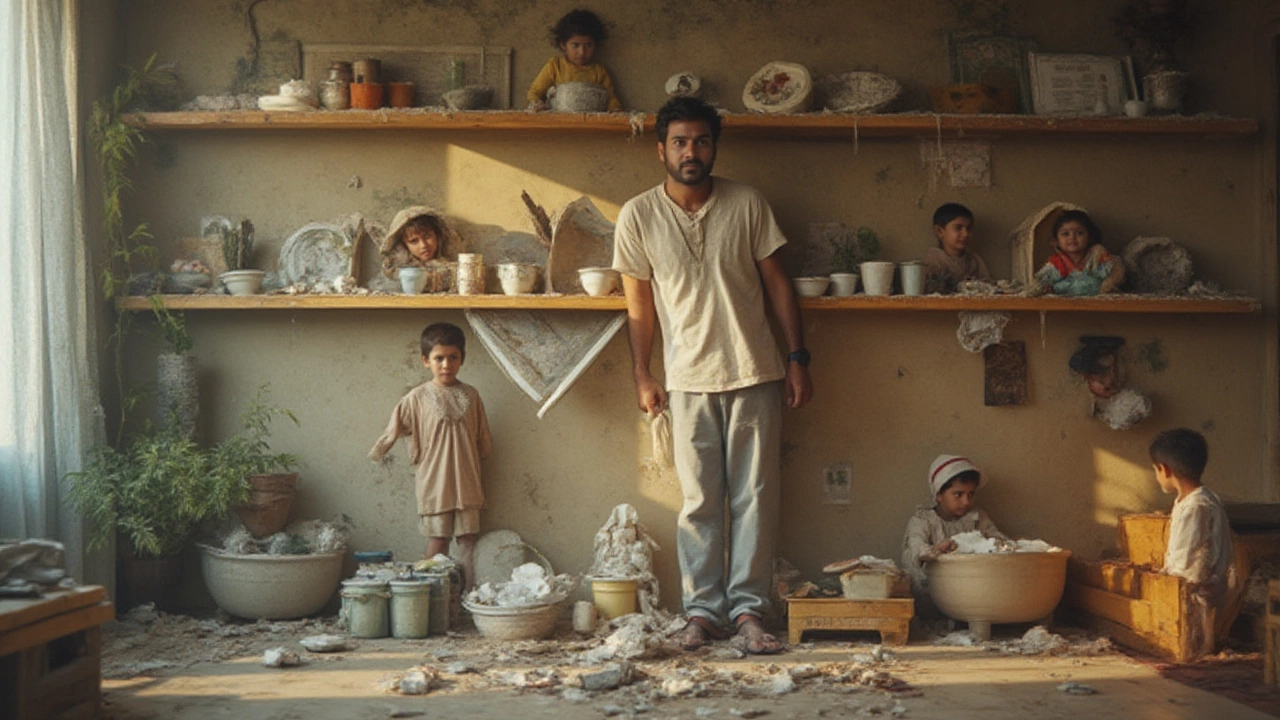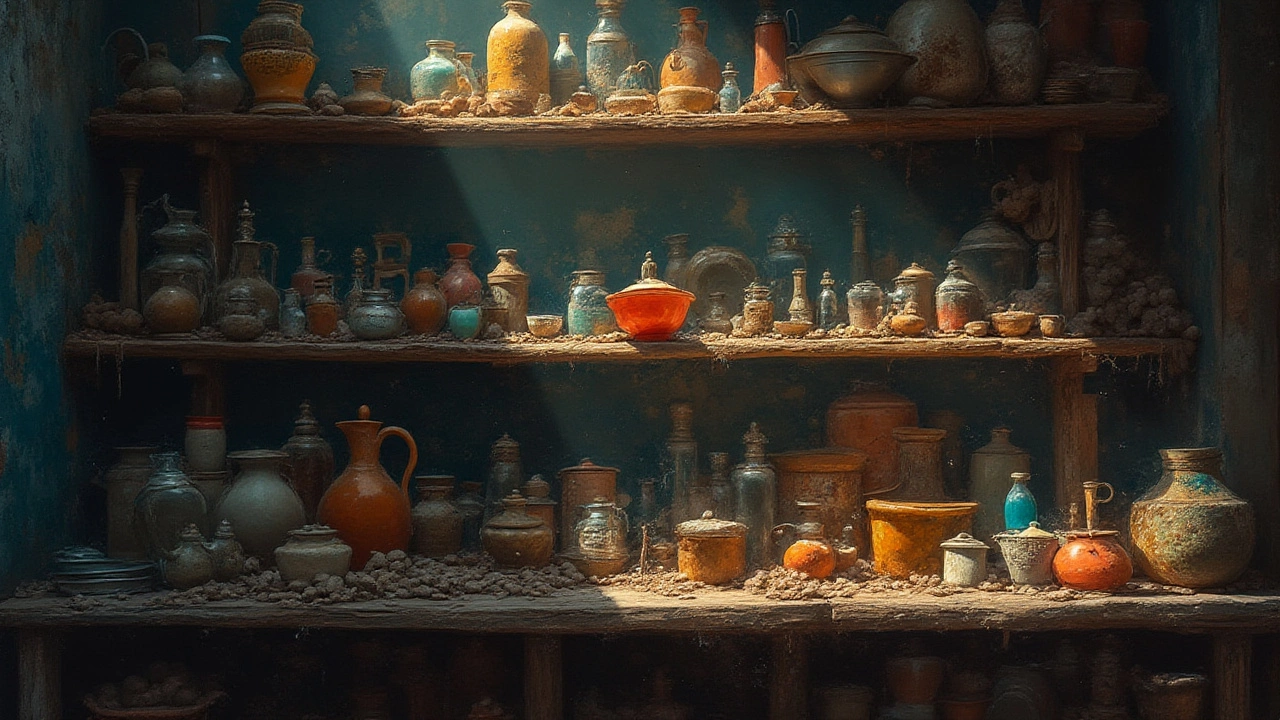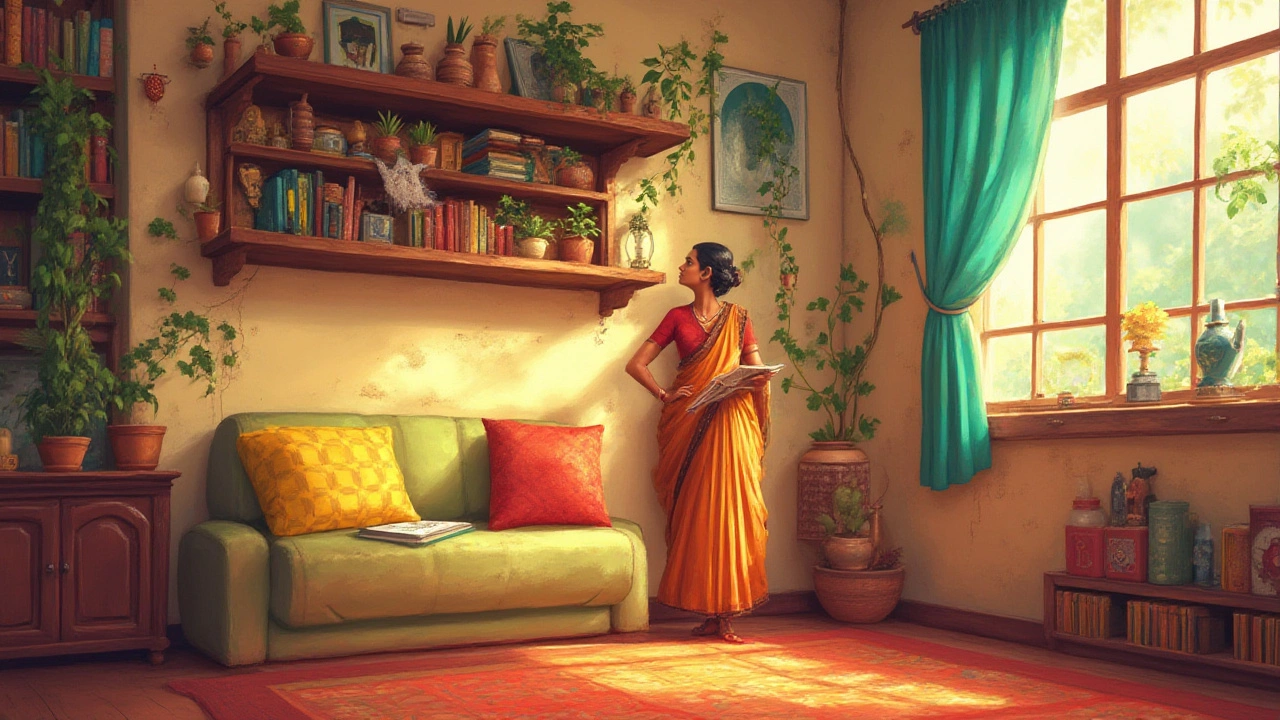Walk into any stylish Oxford flat or bustling London coffee shop, and somewhere, there'll be a lovely wall lined with shelves. Shelving is the go-to for making the most out of wall space, organizing books, showing off houseplants, or keeping your kitchen tools within reach. Seems nifty, right? Yet, tucked behind all those perfectly staged “shelfies” and clever Pinterest hacks, there’s another side—one nobody really brags about. People rarely stop to talk about shelving’s headaches, like sagging planks, constant dust patrol, or the domino effect when an overloaded bracket finally gives out. If you’ve ever gasped while watching your plant teeter dangerously over your laptop, you’re in exactly the right spot.
The Structural Struggles of Shelving
Shelving sounds deceptively simple. Stick some boards up, add brackets, and—voilà!—instant storage. But the reality gets tricky. First up: weight limits. Most ready-made shelves in high street shops claim they’ll hold 20kg per shelf. That’s fine if you’re stacking cotton towels, but books are shocking culprits—one standard shelf of hardbacks can easily tip the scales at 40kg. Cheap materials like MDF or particleboard practically groan under the pressure, often bowing in the middle after just a few years. And have you noticed that the budget brackets, the kind you screw into plasterboard, do little to prevent a dramatic collapse? Real security calls for solid wall anchors and an upfront knowledge of your wall’s layout—skip these steps and you risk splintered planks or, worse, damage to underlying pipes or cables.
Moisture is another silent villain. In kitchens and bathrooms, humidity seeps in, and wooden shelves eventually warp or attract mould. That’s super common in older British homes, where ventilation isn’t always top-notch. And the ever-present UK dust? Shelving, especially those mounted atop radiators or near windows, becomes a collection ground. Every object becomes a dust-magnet, and keeping everything clean is a never-ending battle.
Let's take a quick glance at some shelf weaknesses that turn up time and time again:
| Disadvantage | Common Causes | Typical Fixes |
|---|---|---|
| Sagging | Overloading, low-quality wood | Reinforce or replace with stronger planks |
| Collapsing | Poor wall anchors, overloaded brackets | Proper installation with study anchors |
| Warping | Humidity, moisture | Seal or choose metal/glass shelves |
| Mould growth | Lack of ventilation, humidity | Increase airflow, clean regularly |
| Dust build-up | Proximity to windows/radiators | Regular cleaning, minimize objects |
The lesson? Great shelving isn’t just about aesthetics—it’s about planning and picking materials suited to the job. Many people are caught off-guard by hidden installation costs, too. Brackets, screws, special fasteners—these quickly drive up the price. And depending on your flat or home, drilling can spark its own legal headaches if you rent; landlords often frown on screw-happy tenants. Before you touch a drill, ask for written permission and check for restrictions—some agencies are finicky about wall decor, especially in heritage properties.

Shelf Organisation: Beauty vs. Practicality
Walk past a magazine rack and you'll spot endless inspiration: colour-coded books, artful ceramics, tiny cacti lined up just so. Shelves become a stage for your personality, no doubt. But reality bites when you need something practical. Open shelving exposes everything. Even the best-styled shelf will betray you—messy cables, odd mugs, sunglasses you swore you’d lost—all can kill the look. Unlike closed cupboards, shelves offer no place to hide what you don’t want guests to see. The result? Stress and the exhausting pressure to ‘curate’ every visible inch, especially if your living space is small.
If you have kids or pets, things get even more complicated. Shelves are magnets for curiosity—the cat pushes your ornament to “experiment” with gravity, your toddler sees a new ladder to climb, or your teenager tries to store a secret snack stash. Accidents happen, and breakage is ridiculously common. Glass shelves make it even riskier—a quick swipe from a cat’s tail or a rogue football, and shards are everywhere.
And there’s the cleaning. The more shelves you have, the more surfaces you’ve invited into the daily (or more often, weekly) cleaning ritual. Open shelves in the kitchen? You’d better get comfortable cleaning grease off jars, spice containers, pasta packets. Greasy dust forms a sticky blanket that settles on everything not used daily. The same results pop up in bathrooms, especially once the steam from hot showers mixes with dust in the air.
Trying to keep things tidy? The more shelves you add, the higher the temptation to ‘fill the space.’ This “clutter-creep” is a genuine phenomenon; people are far more likely to hold onto things when they have somewhere visible to put them. A packed shelf may create the illusion of organization, but you’re not really decluttering—you’re just shuffling things around.
Let’s get practical: shelves can also become dead zones. The topmost shelf is often just out of reach for anyone under 1.7m tall. These “too-high” shelves end up storing things you rarely use (holiday decorations, forgotten gadgets), making them almost as inconvenient as the overstuffed attic boxes you swore you’d never fill.
- Tip: Use the lowest and most accessible shelves for items you grab daily to cut down on annoying head-pokes or tiptoe balancing acts.
- Tip: Try not to stack things in double layers—whatever lands behind or underneath often gets forgotten, or worse, falls down when you reach for something else.
- Tip: If you must stack, use labelled boxes or baskets. Clear containers work wonders and keep everything visible while shielding from dust.
Shelving shines for frequently rotated, visually pleasing items. But when form meets function, the cracks start to show—especially as life in your home gets… messy.

Long-term Annoyances and Hidden Costs
If you’ve never had to fill, sand, and repaint a wall covered in anchor holes, you might underestimate just how stubborn shelf installations can be. Moving house or just shifting your room’s layout? Every shelf you remove leaves a line of marks. And if you mount shelves in older homes, you occasionally discover charming surprises, like ancient wiring, crumbly lath, or pipes hidden in the walls. All this adds to the cost and hassle factor.
Many renters in Oxford (or other historical towns) get surprised by restoration costs. UK tenancy agreements often require you to return the walls to their original state. Filler, paint-matching, sometimes even hiring a handyman—these bills can sneak up fast.
Shelves also evolve alongside your habits. What’s ideal for your 20s (a library of paperbacks) might be a hassle by your 40s (decades of medical records and tax forms). Shelving that’s not modular or adjustable turns rapidly obsolete. Fixed heights are notorious for being either too cramped for taller books or wasting heaps of space for knick-knacks. Adjustable shelf options can be more expensive, but offer flexibility over the decades.
Watch for the safety factor. UK building regulations suggest avoiding heavy wall-mounted loads above beds or sofas. That 30kg shelf packed with art books? It can be a real hazard if the fixings fail. Insurance rarely covers damage caused by badly fitted shelves, so a botched installation could cost hundreds in repairs or claims down the line.
And, of course, there’s the silent cost of lost time. Every time you reorganize, clean, or fret about whether a shelf will hold, that's time you’re not spending on things that matter more. If you work from home, excessive visual clutter is proven to increase stress and reduce productivity. A 2022 study by the University of Exeter showed that open storage, while appealing, led to greater stress for remote workers compared to hidden storage solutions like cabinets or closets.
- Do an annual “shelf audit”—if you haven’t touched an object in a year, consider relocating it to closed storage or donating it.
- Choose brackets and fixings rated well above the intended shelf load—stronger is safer.
- If you're in a listed or rental property, invest in freestanding shelving units. These can move with you and won’t leave marks.
- Avoid placing shelves above beds, radiators, or electrical sockets—unexpected leaks or accidents cause the most damage here.
Yes, shelving transforms space and can make a flat look organized—but it exacts a hidden toll in maintenance, time, and even money. The secret? Stay realistic about your actual needs and don’t believe the flawless #shelfie hype. Shelves demand respect—and a little suspicion. If you're going to fill your walls, plan for the realities, not just the Instagrammable dream.
